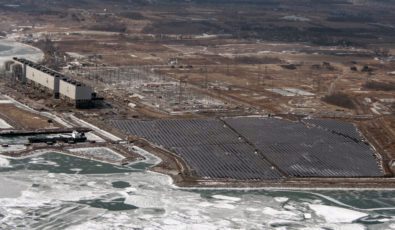Sure, but being realistic, the solar plant can't make use of Gigawatt level grid connections, the below was one of the largest coal plants in the world, 4000 MW, whereas the below very large solar field now occupying the site is 44MW ... 90x smaller. I LOVE that they did this, but it does not at all make use of the massive transmission capacity to this industrial site.
Our story > Nanticoke Solar now generating renewable power for Ontario | OPG
Sadly the government put a law in to appease the red meat base and disallow offshore wind on Lake Ontario, which would have been a far larger opportunity to reuse the transmission capacity. So only this smaller onshore wind farm of 105 MW was built out to use some of the transmission capacity.
Port Dover & Nanticoke Wind - Capital Power




